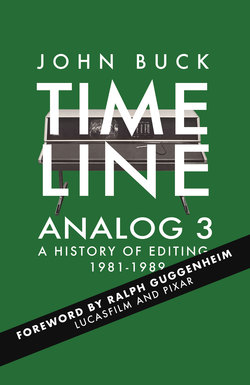Читать книгу Timeline Analog 3 - John Buck - Страница 16
На сайте Литреса книга снята с продажи.
CUBICOMP
Оглавление24-year-old Edwin P. Berlin (next page) and Pradeep Mohan established Cubicomp Corporation in Berkeley to create broadcast modelling and animation equipment. Berlin recalls:
I started Cubicomp because of earlier work I had done with Geoff Gardiner at Grumman Aerospace. In addition to designing fast hardware, we developed efficient algorithms, in that case, for rendering 3D objects composed of textured quadrics bounded by planes.
We simulated the system in software on a Data General minicomputer and that convinced me that with proper attention to algorithm design, one could do 3D modelling and rendering on a PC, which was unheard of at that time
Cubicomp had created a way to convert a line drawing of an object into a simulated 3D image for under $20,000 and it soon became the leader in the PC graphics space. Joey Ponthieux recalls:
Plug and play did not exist and PCs did not come with standard graphics cards that would or could run these graphics applications. There was no NT, no audio, no mice, no Win95, no zip disks and no TNT cards at the local Compusa or Egghead, nothing.
The CS-5, PictureMaker 3-D and PolyCad10 systems empowered individuals and small companies with capabilities that many found hard to believe as Berlin recalls:
When we demonstrated the units at SiGGRAPH, people would look under the table and ask, “Is there a VAX under there?”
Steven Horowitz moved between post-production houses, manufacturers and startups offering advice and building a knowledge base of the emerging editing and graphics industry.
Cubicomp were the first to make a video animation system on a standard PC, primarily because Ed Berlin is a technical genius. The company set an amazing precedence for a revolutionary tool set with an ease of use not seen before.
Berlin, Mohan, Jamie Dickson and Steven Crane proved that a small company with brilliant, well-executed ideas could apply digital technology to an analog industry and change it overnight. Cubicomp became an engineering magnet, a mini-Ampex of sorts.
Michael Olivier had grown up in Berkeley and was dragged into industry.
I was always experimenting with programming with friends and even back then I was always the guy who understood code and who could see what the user experience should be. I seemed to be able to pull the pieces together in a sensible way
Olivier attended UC Berkeley but left before graduating to work at 2D games company, Genigraphics.
It was a very exciting time in the computer industry. They were happy to get people who could program or draw pixels back then! And there really wasn’t any formal training. I became the UI guy there and built their menuing systems and the library that would let other programmers build UIs.
Olivier didn’t need to leave his home suburb to join Cubicomp
I was the UI specialist at Cubicomp, back in the days before there were menus so my job was to build the UI and menus for a next generation hierarchical 3d modelling animation package. The early Cubicomp modelling didn’t have sense of connectivity so then we added this hierarchical element that allowed different elements to impact upon others, in essence a skeletal system in modelling which connected all the elements and allowed them to have behavioural relationships.
